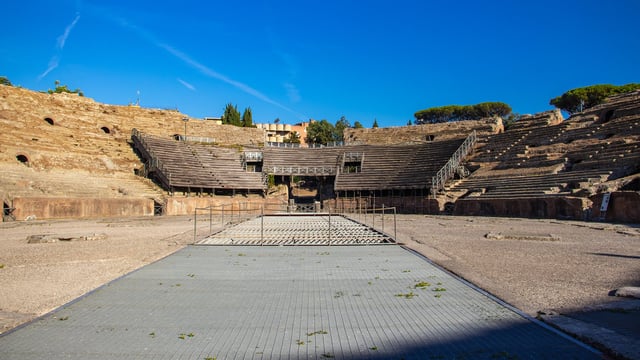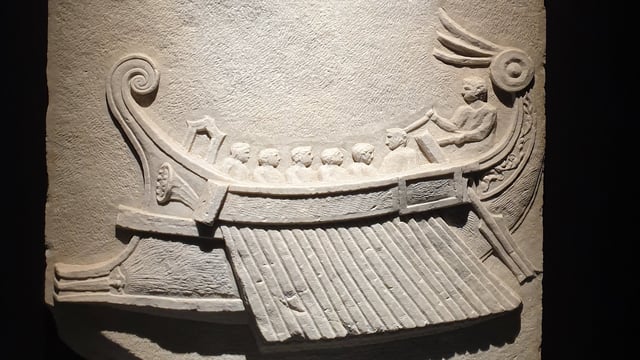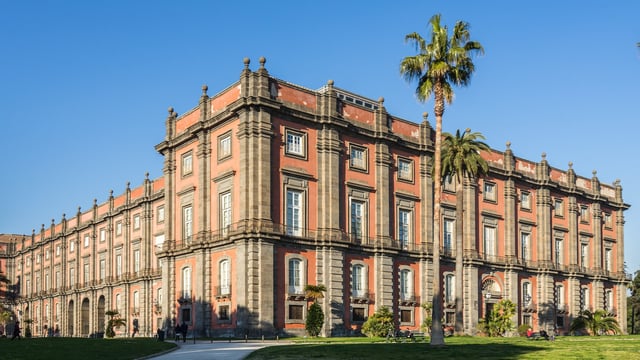Exploring Roman Italy
Rome developed from a city-state to a republic, to the ruler of the Italian peninsular and then an empire centred on the Mediterranean. For nearly a millennium mainland Italy was Rome. It is here that we have the greatest concentration of Roman ruins, landmarks and archaeological sites. From north to south, visitors to Italy can see the remains of amphitheatres and bath houses, the ruins of rural settlements and towns. With a vast number of local and regional museums showcasing excavated artefacts from these sites.
Roman Sites in Italy
Antas Roman Quarry
The quarry represents a rather rare case in the ancient world, since it is in direct contact with the site where the stone was quarried. Approximately 800 m away, in a path not too far from the sanctuary, but still challenging due to the uneven terrain, there are three quarry areas set within a grove. Looking around, one can still clearly see the cutting lines that were followed during the extraction of the limestone. The beginning of the quarrying activity could refer either to the first Roman phase of the sanctuary in the 1st century BC, or to its reconstruction in the 3rd century AD.

Archaeological Park of Turris Libisonis
On the right bank of the river Riu Mannu, in an area to the north-west of present-day Porto Torres, lie the ruins of the ancient Roman city of Turris Libisonis, founded in 46 BC by Julius Caesar and for this reason known as Colonia Iulia. The first excavations were carried out in the 1940s by Massimo Pallottino, who identified one of its three bath complexes in which several mosaics, statues and bas-reliefs were recovered. Within the archaeological area are also the remains of wealthy domus, once belonging to prominent members of the city, from which come magnificent mosaics such as that of Orpheus. The archaeological park can only be visited at certain times, and with entry to the Turritano Antiquarium Museum.

Flavian Amphitheatre
The Flavian Amphitheatre in Pozzuoli is said to be the third largest Roman amphitheatre in Italy. Constructed during the first century AD, the amphitheatre is remarkably well preserved, with an interior that is mostly intact. Parts of the gears that were used to lift animal cages up on to the level of the arena can still be seen here. It is thought that this particular amphitheatre was built by the same architects that built the Colosseum in Rome – which was also known as the Flavian Amphitheatre.

Herculaneum
The ancient city of Herculaneum, buried under 30 metres of ash and volcanic material in the eruption of 79 AD, was brought to light in 1738 under the reign of Charles of Bourbon. Excavations of the site were extremely demanding and concentrated on the area that once overlooked the sea. The visit allows you to move between the ancient streets on which the various craft and commercial activities opened, and the entrances to the domus. Some places such as the Palestra, which remains partly buried and accessible through a gallery, or the College of the Augustales, in which painted scenes of the myth of Hercules survive.

Necropolis of Su Crucifissu Mannu
At a short distance from Porto Torres, a necropolis was excavated between the 4th and the beginning of the 3rd millennium BC, reused at least until 1500 BC. It consists of 22 domus de janas excavated in the limestone rock, some with shaft entrances and others with corridor entrances adorned with various symbolic elements. On the surface of the rocky terrain, there are numerous signs of carts dating back to the Roman period, which probably transported the stone blocks for the construction of the nearby Turris Libisonis. With free access, the archaeological site will give you an incredible feeling of exploration in search of the hypogea scattered in the area.

Nora Archaeological Site
According to ancient sources, Nora was one of the first cities founded in Sardinia. Phoenicians, Carthaginians and Romans followed one another on this small peninsula, which established itself as an important trading centre in the ancient Mediterranean. Most of the visible structures are from its Roman phase, built between the 1st century BC and the 4th century AD. Visitors can explore the remains of the Roman city’s main features, such as the baths, sanctuaries and living quarters, in which splendid mosaics survive, and the theatre, which, given its excellent condition, is still used for concerts in the evenings during summer.


Pompeii
The archaeological site of Pompeii is one of the most well-known and much visited sites in the world. Pompeii was a Roman city that was buried under four to six metres of volcanic ash from the eruption of Mount Vesuvius in 79 AD. The site has been a tourist destination for about 250 years, and today over 2.5 million people visit each year making this one of the most popular attractions in Italy. For conservation reasons, only a fraction of the site is open to the public – but there is still much to see of the Roman city, including theatres, the amphitheatre, the forum, bath houses and residences with exquisite wall paintings.


Roman Amphitheatre, Cagliari
One of the best examples in Sardinia where an archaeological ruin merges with the modern city. It was built between the end of the 1st and the beginning of the 2nd century AD, becoming part of the city landscape from that time on. Throughout its history it had many roles: it was the site of gladiatorial battles, a quarry, a family shelter and a concert arena. It is undoubtedly a symbolic place of the city of Cagliari, which can be admired from the streets that surround it. By paying a small ticket, it is possible to get closer to better observe it, but unfortunately, neither walking in the arena nor visiting its inner areas is allowed.


Roman Baths of Fordongianus
The baths are located in what was the border area between Romanised and indigenous territory. The town was first known as Acque Ypsitanae, founded in the late Republican age, later took the name Forum Traiani, sometime between 98 and 117 AD. The first part of the baths was probably built between the 1st and 2nd century AD, linked to health-giving deities, due to the healing properties of the thermal water. The large pool flanked by a portico is still visible, which connects to the second part of the baths, consisting of the classic division into frigidarium, tepidarium and two caldaria. In addition, small traces of painting still survive in one room, a fairly rare occurrence in Sardinia.

Roman Bridge of Porto Torres
One of the most important Roman engineering works in Sardinia, the bridge at Porto Torres was built during the imperial period. Seven arches span the river Riu Manno, carrying a section of an important road that connected Turris Libisonis to Karales, today’s Cagliari. The bridge has been continuously used, by both light and heavy vehicles, until the 1980s, being repaved several times. Restoration work was carried out in 2020, allowing those who visit today the chance to admire the bridge’s original paving stones, on which there are still traces of the passage of the carts that, over the centuries, crossed its 132 metres.

Museums With Roman Collections in Italy
Antiquarium Arborense, Oristano
Founded in 1938 but based in the Palazzo Parpaglia since 28 November 1992, the museum houses some of the most significant antiquarian collections on the island, with artefacts mainly from Tharros. The museum tour is structured on two different floors: the ground floor hosts an engaging exhibition on forgeries derived from Nuragic bronze statues and tells the human history of the Oristano territory, from the Neolithic to the Roman and early medieval periods; the first floor houses the other rooms, one dedicated to archaeologists and Efisio Pischedda, former owner of the museum’s most important private collection, one to retables, with important paintings dating from the 13th to the 16th century, and a tactile room for blind people.

Antiquarium Turritano, Porto Torres
The museum is adjacent to the archaeological park of the ancient Roman colony of Turris Libisonis. It was built between 1971 and 1973 to house the many artefacts from the archaeological site but only opened to the public in 1984. Numerous artefacts testify to the vibrancy of the city and its port activity are on display: ceramics and everyday utensils, votive and cultic furnishings, statues of the city’s magistrates who lived between the 1st and 3rd century AD, as well as inscriptions, cinerary urns and remarkable mosaics and frescoed plasters. Also visible in the museum are the partial remains of a thermal bath, brought to light during the building extension works.

Archaeological and Palaeobotanical Museum of Perfugas
The museum, founded in 1988, exhibits the most significant archaeological and palaeobotanical finds from Anglona, a historical region in Northern Sardinia that overlooks the Gulf of Asinara. Within five sections, dedicated respectively to palaeobotany, the Palaeolithic, Neolithic and Eneolithic, the Nuragic period, and the Classical and Medieval periods, the environmental and human history of the territory is exhibited. Starting from the plant fossils returned from the petrified forests, you can see finds of the first human habitation dating back to the Lower Palaeolithic, admire the magnificent statuette of a Mother Goddess with a child from the Middle Neolithic, and precious artefacts from the Nuragic and Roman periods.

Archaeological Museum Ferruccio Barreca
The museum has been open to the public since 9 January 2006, and houses numerous artefacts related to the ancient city of Sulky, which lies beneath modern Sant’Antioco. The centre was founded by the Phoenicians towards the end of the 9th century BC and was one of the most important trading ports in Sardinia throughout antiquity. The museum tour is narrated in three rooms, which respectively display the finds of the settlement, the necropolis, and the tophet, i.e. the three main nuclei of the urban settlement. Phoenician, Punic and Roman artefacts are displayed in the showcases, which attempt to narrate the different aspects of society, related to daily life, religious, funerary and sacred contexts.

Archaeological Museum of Campi Flegrei
In a recently restored 15th century Aragonese Castle, that once guarded the Gulf of Pozzuoli, is the Museo archeologico dei Campi Flegrei. The Campi Flegrei, or burning fields, is a large volcanic area that is now a national park. And it was the many volcanic thermal springs in the area that attracted people in antiquity. On display in the museum are a number of reconstructions of shrines and temples, some of which are now submerged, from the area.

Archaeological Museum of Olbia
The archaeological museum in Olbia celebrates hundreds of years of history in Sardinia’s north-east area. Located in the city’s harbour, this modern building was designed with portholes and walkways to reflect Olbia’s history as an important port. The permanent display take an extensive view of the various periods of Olbia’s past, from the Phoenicians, Greeks, to the Punic and Roman eras. Pride of place in the museum are the conserved remains of Roman boats that had sunk in the ancient harbour and discovered again during the construction of the museum building.

Archaeological Museum, Alghero
Inaugurated on 22 December 2016 inside a historic building dating from the 15th-16th centuries, the museum displays a vast array of objects relating to the history of Alghero and its surroundings. The exhibition plan, which is extremely clear and well marked, is structured around three thematic areas: the sea, ways of living, and the world of the sacred. The finds come from marine, settlement and sacred-funeral contexts, covering an age from the ancient Neolithic to the 17th century AD. Some of the reconstructions of the excavation contexts inside the museum are incredibly engaging, such as that of one of the rooms of the Roman villa of Sant’Imbenia, recomposed inside with the colourful and precious marbles that adorned it.

Capodimonte Museum
In 1738 King Charles of Bourbon ordered the construction of the Royal Palace that today houses the Museum. It was initially founded as a hunting reserve, but ended up becoming one of the residences of the royal family, in which part of the Farnese Collection was exhibited from the very beginning. Already in the 18th century it was an obligatory stop for visitors to Italy, given the importance of the works on display. The Museum, opened on 5 May 1957, is one of the most important picture galleries in Europe, and houses in its 124 galleries numerous works by great names such as Botticelli, Michelangelo, Raphael, Caravaggio and Titian. In addition to these are extraordinary collections of porcelain and decorative arts, tapestries and royal furniture, as well as Roman sculpture.

Civic Archaeological Museum of Cabras
The Museo Civico “Giovanni Marongiu” – Cabras opened in 1997 exhibiting the local history of the Cabras municipality (including the Sinis Peninsular), from prehistory to medieval times. Artefacts come from Neolithic, Nuragic, Phoenician-Punic, Roman and medieval sites in the area. Two notable displays include the Roman shipwreck of Mal di Ventre, dated to the 1st century BC, and a small collection of the large stone statues, the ‘Sardinian Giants’, recovered by archaeologists at the Nuragic necropolis of Mont’e Prama.

Este National Museum - Museo Nazionale Atestino
In pre-Roman times, the area around Este was the centre of the Veneti Iron Age tribe. During the 2nd century BC Este became a Roman Colony – Ateste. The history of the region, from prehistory to the Roman period is on display in 11 galleries created in the 16th century Palazzo Mocenigo. From the museum, a six mile, self-guided walk leads visitors around the city taking in a series of pre-Roman and Roman points of interest, including a prehistoric necropolis and a Roman/medieval Castle.























